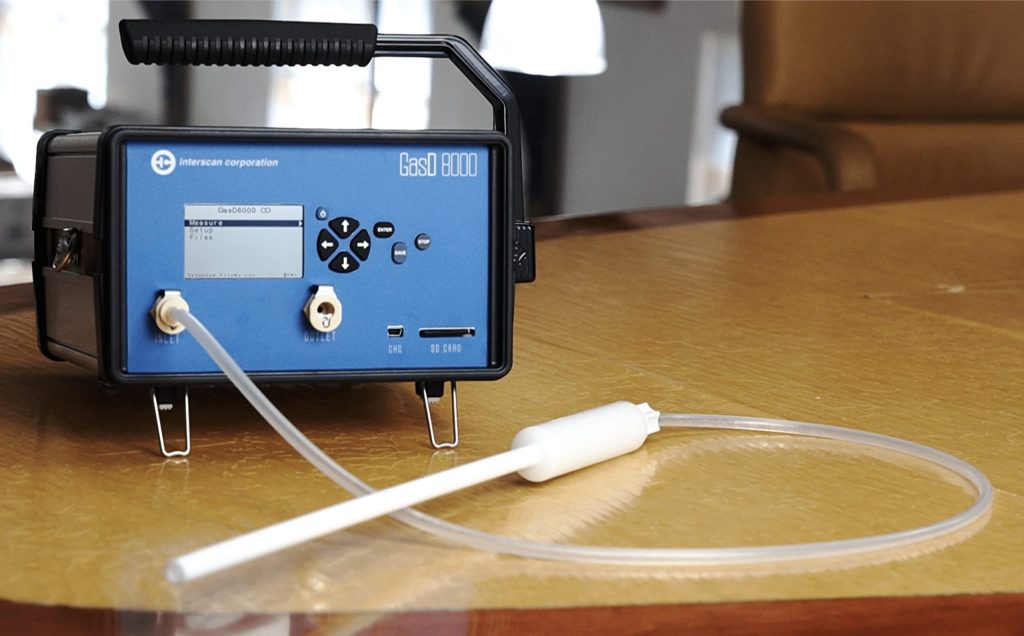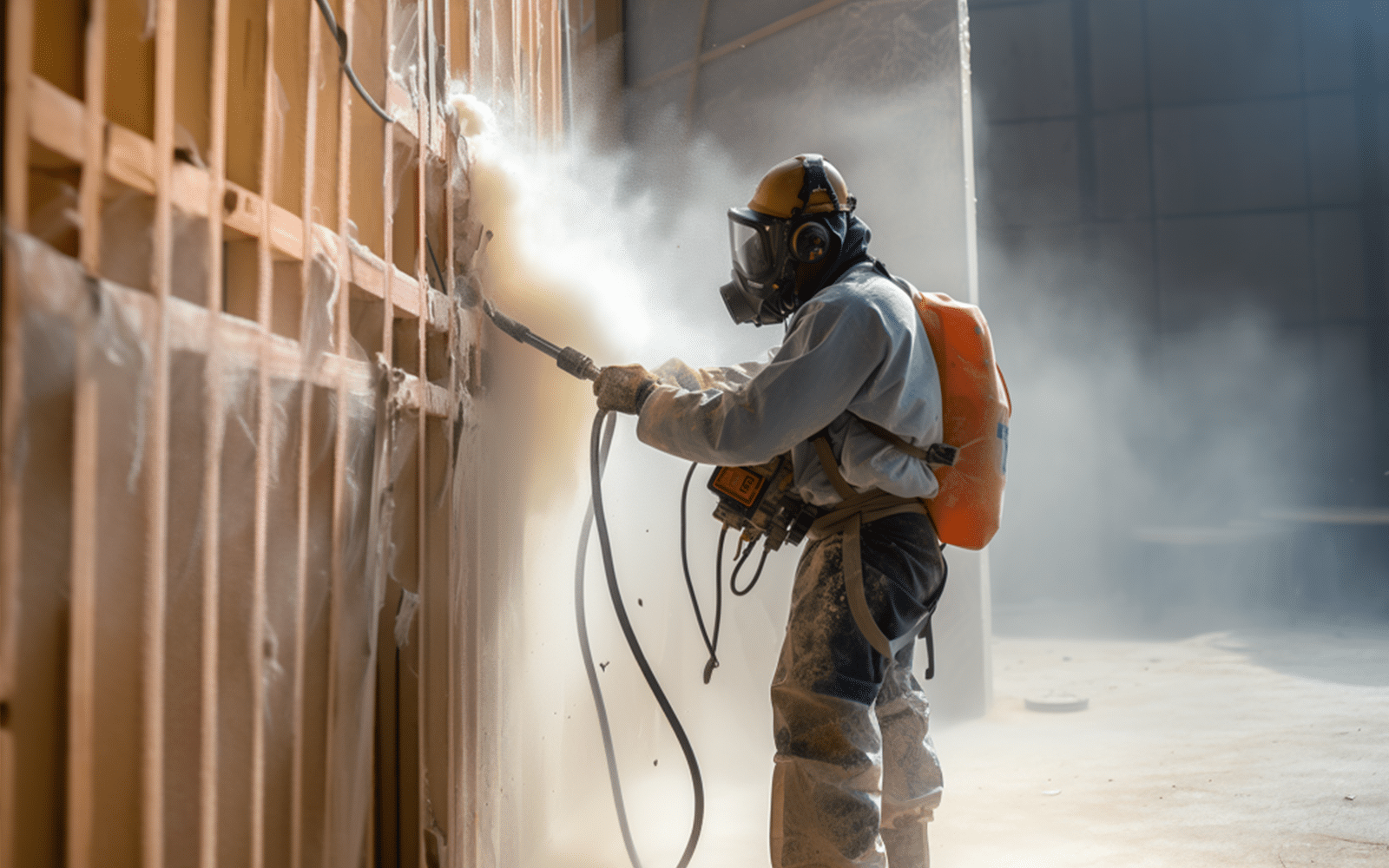Ensuring workplace safety is a top priority, especially when protecting employees from harmful gases. Due to its potential health hazards and colorless, strong-smell formaldehyde detection has become integral to safety measures.
This article aims to deepen our understanding of formaldehyde, explore the challenges in detecting it, discuss its regulation in the workplace, and address the importance of effective detection strategies in industries where it’s commonly used. Additionally, we’ll explore how companies like Interscan Corporation, a gas detection technology leader, provide comprehensive solutions to these challenges.
-
What are the potential dangers of formaldehyde exposure in the workplace?
What is formaldehyde?
Formaldehyde, known by its systematic name methanal, is a naturally occurring organic compound. This simple carbohydrate, represented by the formula CH2O and structure H−CHO, is the most basic among aldehydes. When pure, it exists as a colorless gas with a potent odor and spontaneously transforms into a substance known as paraformaldehyde.
Given this propensity to polymerize, it’s typically stored in a solution known as formalin, which is also commonly used for preserving biological specimens. Its name, “formaldehyde,” stems from its similarity and connection to formic acid.
This compound is a critical precursor to various other materials and chemical compounds. In 2006, it was reported that the annual global production of formaldehyde was around 12 million tons. Its primary application is creating industrial resins, which are crucial in manufacturing products like particle boards and coatings.
Formaldehyde Health Risks
According to the US National Toxicology Program, Formaldehyde has been described as a known human carcinogen. Meaning it is a substance that can cause cancer. Concentrations above 0.1 ppm may cause headaches, a burning sensation in the throat, and difficulty breathing and can trigger or aggravate asthma symptoms.
According to the CDC, the best way to protect against formaldehyde exposure is to use a full-facepiece respirator (also known as a gas mask) with a chin-style, front- or back-mounted canister designed for air purification. As someone who works in the field, another great way to protect against formaldehyde exposure is to detect it before a problem arises. Using an active formaldehyde detection system, you can ensure that the instrument will be aware of toxic gas much faster than we can. We will go into further detail about detecting formaldehyde in the next section.
-
How does formaldehyde detection work?

The tech behind the detector
The sensors detect a specific gas and generate an electric signal corresponding to the gas level. However, the lifespan of an electrochemical sensor is influenced by the total amount of gas it’s exposed to and the surrounding environmental factors. In recent years, new measurement technologies have helped to make measurement tools smaller. Thanks to these advancements, sensing devices that can provide real-time data are now accessible.
Active vs. Passive Sampling
In addition to fixed and portable devices, active versus passive detection is another important distinction in gas detectors. Active gas detection involves actively pumping air to collect samples and detect gases. This method is recommended for gases like formaldehyde, which can cause harm even at trace levels. On the other hand, passive detection relies on passive air sampling techniques, such as diffusive sampling, which takes advantage of the natural diffusion process to collect gases and vapors. Unlike active sampling, passive air sampling does not require air movement, making it a convenient option in certain situations.
Interscan offers a range of gas detection devices, including the GasD8000, a portable and active detection device. This device is well-suited for applications where detecting formaldehyde or other harmful gases at low levels is necessary. For fieldwork, travel, or specific industrial environments, selecting the appropriate type of gas detector based on the application and the specific gases involved is vital to ensure effective safety protection.
By understanding the distinctions between fixed and portable devices and active and passive detection methods, individuals can make informed decisions regarding gas detection equipment, prioritizing safety and minimizing risks associated with hazardous gases in various settings.
-
What are the regulations surrounding formaldehyde levels in the workplace?
OSHA
Here is an excerpt directly from OSHA. Please head to the OSHA Formaldehyde page for the full list of regulations.
1910.1048(c)(1)
TWA: The employer shall assure that no employee is exposed to an airborne concentration of formaldehyde which exceeds 0.75 parts formaldehyde per million parts of air (0.75 ppm) as an 8-hour TWA.
Short Term Exposure Limit (STEL): The employer shall assure that no employee is exposed to an airborne concentration of formaldehyde which exceeds two parts formaldehyde per million parts of air (2 ppm) as a 15-minute STEL.
EPA
Laws and Regulations Concerning Formaldehyde – This is a great resource if you are unclear on the laws and regulations for formaldehyde. I’ll provide a section from the Toxic substances control act:
“The Toxic Substances Control Act (TSCA) gives EPA authority to require reporting, recordkeeping and testing requirements, and restrictions relating to chemical substances and/or mixtures. In addition to TSCA Title VI, which applies to formaldehyde emissions from composite wood products, the Act regulates significant new uses of formaldehyde pursuant to Section 5(a)(2) of TSCA. Such regulations are listed at 40 CFR Part 721, Subpart E.”
-
What industries most commonly need formaldehyde detection and why?

Formaldehyde is used in many industries, and it is necessary to detect toxic levels wherever the gas is present. Workers can inhale formaldehyde as a gas or vapor or absorb it through the skin as a liquid. Here is a list of common industries that use formaldehyde and why detection is necessary.
- Textile Industry: Formaldehyde is widely used in this sector for its resin-producing properties, which are useful in making wrinkle-resistant fabrics. It is also used in the production of waterproof clothing materials.
- Construction Industry: Formaldehyde is a key ingredient in the resins used to make particle boards, plywood, and fiberboard, common materials in home construction. It is also found in insulating materials and certain types of paint and varnish.
- Healthcare Industry: Formaldehyde is used for its disinfectant and preservative properties. It’s commonly used in hospitals as a sterilizer to preserve biological specimens for research and education.
- Automotive Industry: In the manufacturing of vehicles, formaldehyde-based resins are used in the production of various car parts, including upholstery, carpeting, and certain components of the engine.
- Chemical Industry: Formaldehyde is a significant building block in synthesizing various chemical compounds. It produces phenol-formaldehyde resins, urea-formaldehyde, polyacetal resins, and many other chemical compounds. These substances, in turn, find application in various industries, including plastics, textiles, and pharmaceuticals. Due to its antimicrobial properties, it is also used as a reducing agent in some chemical reactions and as a fumigant.
-
How can businesses improve their formaldehyde detection strategies?
Detecting formaldehyde effectively is a significant challenge for many businesses. Its colorless, pungent nature and rapid dispersion and reaction tendencies can make accurate detection complex. Often, conventional sensors lack the sensitivity needed to detect the low concentrations that can still present health hazards.
Tips
Here are several tips for businesses looking to improve their formaldehyde detection practices:
- Use highly sensitive, accurate, and reliable detection systems that can measure even low levels of formaldehyde.
- Regularly calibrate and maintain the detection equipment to ensure accuracy.
- Position detectors strategically around the workplace, especially where formaldehyde is commonly used or stored.
- Train employees on the risks of formaldehyde exposure, how to interpret detection system data, and what to do in case of a detection event.
- Regularly review and update safety protocols based on detection system data and updates to regulations.
Interscan Corporation has been a leader in gas detection technology for over 40 years, offering solutions that can address the challenges businesses face in detecting formaldehyde.
Their detection systems are designed to provide superior sensitivity and accuracy, ensuring that even low levels of formaldehyde can be detected swiftly. Interscan’s technology also helps distinguish formaldehyde from other gases, critical to maintaining a safe environment.
The importance of proper detection
Formaldehyde’s ubiquitous use across industries and potential health risks necessitates stringent and effective detection measures. While the challenges are manifold, with careful planning, utilization of advanced detection systems, and ongoing employee education, businesses can maintain safer working environments.
Detection solutions are not just an investment in safety equipment but a proactive commitment to the health and well-being of all those who make our industries thrive. Stay tuned for more insights on keeping industrial environments safe and compliant with regulatory standards.
Sources
“Formaldehyde.” Wikipedia, 11 July 2023, en.wikipedia.org/wiki/Formaldehyde.
“CDC – NIOSH Pocket Guide to Chemical Hazards – Formaldehyde.” Centers for Disease Control and Prevention, 30 Oct. 2019, www.cdc.gov/niosh/npg/npgd0293.html.
Chung, Po-Ren, et al. “Formaldehyde Gas Sensors: A Review.” Sensors, vol. 13, no. 4, 2 Apr. 2013, pp. 4468–4484, https://doi.org/10.3390/s130404468. Accessed 9 Dec. 2019.
“Passive vs. Active Air Sampling.” Www.zefon.com, 15 June 2021, www.zefon.com/passive-vs-active-air-sampling.


